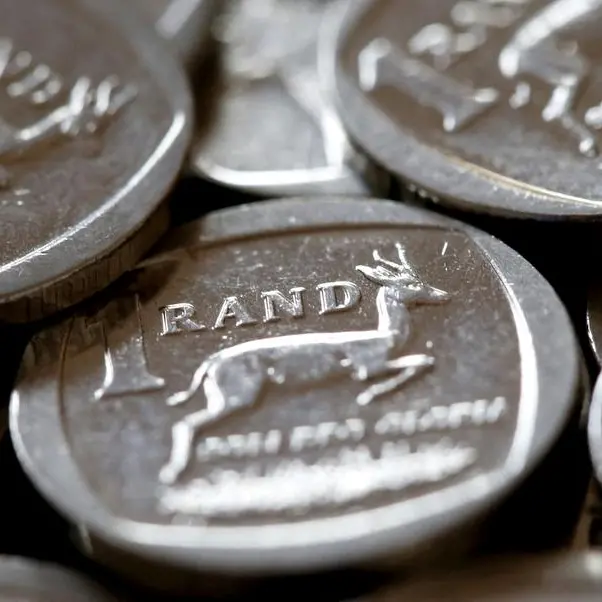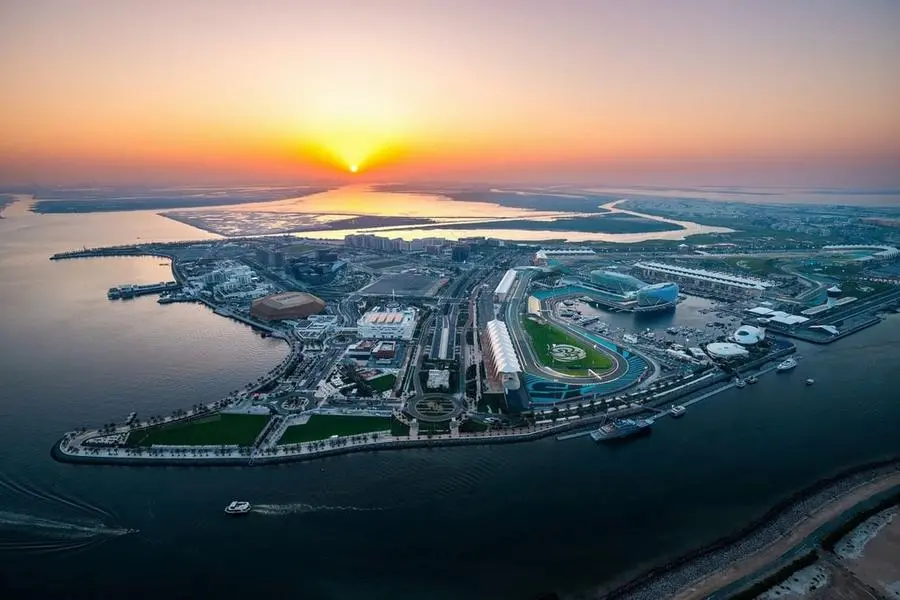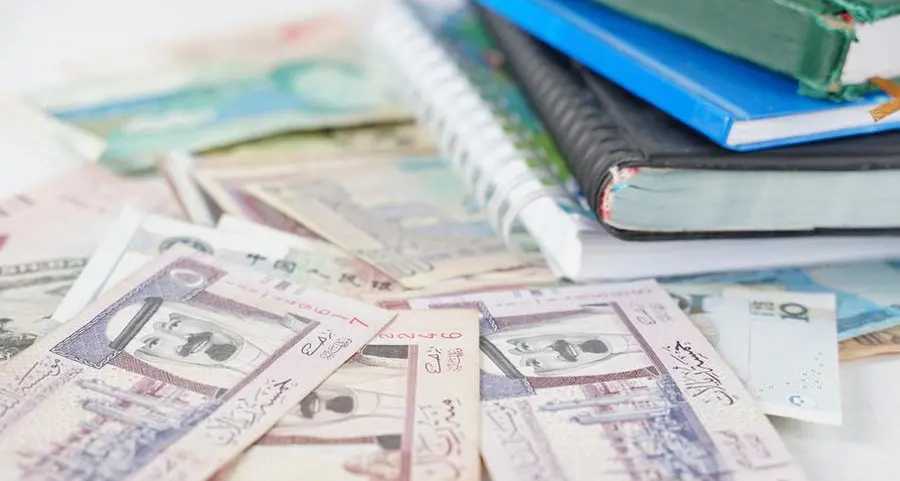02 April 2012
It will be no mean feat to outpace Qatar's amazing GDP growth, but that's exactly what Saudi Arabia is estimated to accomplish in 2012.
The tiny gas giant has been posting double-digit growths for the past six years, but Saudi Arabia, the region's largest economy may eclipse the country this year, if current trends continue.
Saudi Arabia is riding on an unprecedented oil output at extremely high crude prices, compelling Citibank to predict a 7.1% growth for the Kindom's economy this year - its previous estimate for the Saudi economy was 5.9%. Qatar, meanwhile, is expected to post a 'paltry' 6% growth, according to Citibank estimates
This upgrade is due to the bank's revised forecast of Brent crude prices to USD124 on average this year, and Saudi Arabia being the most major beneficiary of these prices. According to some estimates, Saudi oil production is set to rise 5.5% compared to the GCC average of 3.7% rise in output this year.
In a remarkable turnaround, the Kingdom saw a resurgence in its exports to the United States, rising 38% in the first three months of the year.
"We estimate expenditures will once again overshoot budget (although will remain lower than 2011 levels due to the one-off nature of many such expenditures), but the net result will be a budget surplus in excess of 20% of GDP in 2012, up from just under 14% in 2011," said Citibank's Farouk Soussa in a note to clients.
"We believe growth in the non-oil economy will remain strong, around 8.5%, on the back of continued high government expenditure and increased domestic demand."
WHAT IF OIL PRICES COLLAPSE?
Some analysts are worried about a sudden drop in crude prices. The sustained rise in prices is short-circuiting growth of many fragile economies, especially in the developed world, and another spike in oil prices could well derail global economic recovery.
There are other clouds on the horizon too. The Chinese and Indian economy is slowing down and many fear a hard landing especially for the Middle Kingdom, which could arrest crude's rise.
Additionally, the United States, United Kingdom and France are mulling over release of oil stocks from their strategic pile, which could send prices spiralling downwards.
Certainly, the International Energy Agency, which co-ordinates such measures from OECD nations, seems ready to act.
"The oil market has been tightening in recent months; crude oil prices are very high again, and petrol prices have reached a record high level in some member countries," said IEA Executive Director Maria van der Hoeven.
"The IEA is closely monitoring market developments and will remain in close contact with member countries to exchange views about the oil-market situation. As we have mentioned many times, the IEA was created to respond to serious physical supply disruptions, and we remain ready to act if market conditions so warrant."
But Citibank believes oil price volatility does not represent a serious challenge to government expenditure plans and growth.
Saudi Arabia has accumulated significant fiscal space over the years, with government deposits at SAMA amounting to over USD320-billion in December, up USD52-billion since the beginning of the year.
"Another measure of government wealth is to calculate the cumulative fiscal surpluses over the past decade, assuming all of these have been saved for a rainy day. On this measure, government assets stood at almost USD370-billion at end 2010. This level of wealth affords the Saudi government a great deal of discretion in pursuing countercyclical fiscal policy, and we believe the political imperative is to do so, given the demographic imbalance and the need to provide jobs to the people," said Soussa.

WHAT ABOUT JOBS?
What's most frustrating for authorities is that the Saudisation policies and an economic boom is not translating into jobs for the citizens.
While the PMI data are generally upbeat, the impact on employment has so far been muted, notes Keith Savard, director of economic research at Riyadh-based SAMBA, in a note to clients.
Last September the employment PMI dipped below 50, indicating that more firms had shed labour than added it during the month. Since then, the index has moved back into expansionary mode, and in January was at 53.2, though this indicates that only a net 5.5% of firms had added staff--some way below the rate one might expect given the upbeat nature of the new orders data.
"The reluctance of firms to add to payrolls may reflect overcapacity built up during the 2005-08 boom, as well as a backdrop of political uncertainty in the MENA region. The new nitiqat system of Saudiisation might have weighed on hirings in the second half of 2011 as the new system bedded in. Once nitiqat becomes more established then the employment index might begin to move more substantially higher," said Savard.
The government's Nitiqat programme, which rewards companies that hires a certain proportion of Saudis on their payrolls, and penalises them for failing to meet that threshold has troubled many companies, especially those in the private sector.
According to a senior Labour Ministry official, 50% of companies in the private sector are in the 'red category', which implies that they have not met their criteria of hiring Saudis and are banned from applying for new visa. The Saudi unemployment figure, which officially hovers around 11%, is deemed much higher by analysts.
Jadwa Investments estimates unemployment among males alone stood at 11%, and could scale back to 10.5% in 2012 and 9.4% by 2013 - still stubbornly high by global standards.
Authorities are clearly worried that sustained unemployment in the country could lead to popular dissent and potentially lead to the kind of revolution that has upstaged regimes in many neighbouring countries. Indeed, the oil-rich Eastern Province has seen sporadic demonstrations and protests, which could fester if many Saudis remain unemployed.
HOUSING PLANS
Tied to the issue of empowerment and a sense of belonging is the issue of housing which is a sore point for many Saudis.
Rising population and with more Saudis of marriageable age looking to move out and start their own families has placed great demands on the housing market.
The Saudi King Abdullan Bin Abdulaziz Al Saud paid special attention to housing last year, ordering the construction of 500,000 affordable units.
The Kingdom's Ninth Development Plan estimates that 1.25 million housing units are required in 2010-2015, while the government itself has pledged to build 500,000 in the coming 5-10 years. This implies a substantial shortfall in supply that must be made up by the private sector.
But the logistics are slowing the progress. Crucial among these is the mortgage law that many analysts believe could unlock a housing boom in the country due to the pent up demand.
Citibank estimates that the mortgage law could come into effect this year.
"Financing has been one of the key impediments to greater private sector participation, and the mortgage law should address this, allowing individuals to privately finance house builds and purchases," says Soussa. "This will, in our opinion, be a strong catalyst for the housing market and the economy at large, as thousands of Saudis currently unable to get married for lack of jobs and houses, should be able to do so in the years to come."
CONCLUSION
While Saudi Arabia seems to be enjoying yet another fossil-fuel driven bonanza and unleashing a major development plan which is the envy of the world, there are two things missing from the equation: a drastic cut in unemployment, and lack of efforts at political and social reform in the Kingdom.
Despite the short-term windfall for Saudi Arabia in oil markets, there are great changes afoot in the global hydrocarbons' industry, which could well upstage Saudi Arabia from its position as the world's pre-eminent crude supplier.
The authorities will need to prepare for those contingency plans when the going is good - which is right now.
Also Read: Can Tadawul's Blistering Growth Last?
U.S. To Top Saudi Oil Production By 2020
It will be no mean feat to outpace Qatar's amazing GDP growth, but that's exactly what Saudi Arabia is estimated to accomplish in 2012.
The tiny gas giant has been posting double-digit growths for the past six years, but Saudi Arabia, the region's largest economy may eclipse the country this year, if current trends continue.
Saudi Arabia is riding on an unprecedented oil output at extremely high crude prices, compelling Citibank to predict a 7.1% growth for the Kindom's economy this year - its previous estimate for the Saudi economy was 5.9%. Qatar, meanwhile, is expected to post a 'paltry' 6% growth, according to Citibank estimates
This upgrade is due to the bank's revised forecast of Brent crude prices to USD124 on average this year, and Saudi Arabia being the most major beneficiary of these prices. According to some estimates, Saudi oil production is set to rise 5.5% compared to the GCC average of 3.7% rise in output this year.
In a remarkable turnaround, the Kingdom saw a resurgence in its exports to the United States, rising 38% in the first three months of the year.
"We estimate expenditures will once again overshoot budget (although will remain lower than 2011 levels due to the one-off nature of many such expenditures), but the net result will be a budget surplus in excess of 20% of GDP in 2012, up from just under 14% in 2011," said Citibank's Farouk Soussa in a note to clients.
"We believe growth in the non-oil economy will remain strong, around 8.5%, on the back of continued high government expenditure and increased domestic demand."
WHAT IF OIL PRICES COLLAPSE?
Some analysts are worried about a sudden drop in crude prices. The sustained rise in prices is short-circuiting growth of many fragile economies, especially in the developed world, and another spike in oil prices could well derail global economic recovery.
There are other clouds on the horizon too. The Chinese and Indian economy is slowing down and many fear a hard landing especially for the Middle Kingdom, which could arrest crude's rise.
Additionally, the United States, United Kingdom and France are mulling over release of oil stocks from their strategic pile, which could send prices spiralling downwards.
Certainly, the International Energy Agency, which co-ordinates such measures from OECD nations, seems ready to act.
"The oil market has been tightening in recent months; crude oil prices are very high again, and petrol prices have reached a record high level in some member countries," said IEA Executive Director Maria van der Hoeven.
"The IEA is closely monitoring market developments and will remain in close contact with member countries to exchange views about the oil-market situation. As we have mentioned many times, the IEA was created to respond to serious physical supply disruptions, and we remain ready to act if market conditions so warrant."
But Citibank believes oil price volatility does not represent a serious challenge to government expenditure plans and growth.
Saudi Arabia has accumulated significant fiscal space over the years, with government deposits at SAMA amounting to over USD320-billion in December, up USD52-billion since the beginning of the year.
"Another measure of government wealth is to calculate the cumulative fiscal surpluses over the past decade, assuming all of these have been saved for a rainy day. On this measure, government assets stood at almost USD370-billion at end 2010. This level of wealth affords the Saudi government a great deal of discretion in pursuing countercyclical fiscal policy, and we believe the political imperative is to do so, given the demographic imbalance and the need to provide jobs to the people," said Soussa.

WHAT ABOUT JOBS?
What's most frustrating for authorities is that the Saudisation policies and an economic boom is not translating into jobs for the citizens.
While the PMI data are generally upbeat, the impact on employment has so far been muted, notes Keith Savard, director of economic research at Riyadh-based SAMBA, in a note to clients.
Last September the employment PMI dipped below 50, indicating that more firms had shed labour than added it during the month. Since then, the index has moved back into expansionary mode, and in January was at 53.2, though this indicates that only a net 5.5% of firms had added staff--some way below the rate one might expect given the upbeat nature of the new orders data.
"The reluctance of firms to add to payrolls may reflect overcapacity built up during the 2005-08 boom, as well as a backdrop of political uncertainty in the MENA region. The new nitiqat system of Saudiisation might have weighed on hirings in the second half of 2011 as the new system bedded in. Once nitiqat becomes more established then the employment index might begin to move more substantially higher," said Savard.
The government's Nitiqat programme, which rewards companies that hires a certain proportion of Saudis on their payrolls, and penalises them for failing to meet that threshold has troubled many companies, especially those in the private sector.
According to a senior Labour Ministry official, 50% of companies in the private sector are in the 'red category', which implies that they have not met their criteria of hiring Saudis and are banned from applying for new visa. The Saudi unemployment figure, which officially hovers around 11%, is deemed much higher by analysts.
Jadwa Investments estimates unemployment among males alone stood at 11%, and could scale back to 10.5% in 2012 and 9.4% by 2013 - still stubbornly high by global standards.
Authorities are clearly worried that sustained unemployment in the country could lead to popular dissent and potentially lead to the kind of revolution that has upstaged regimes in many neighbouring countries. Indeed, the oil-rich Eastern Province has seen sporadic demonstrations and protests, which could fester if many Saudis remain unemployed.
HOUSING PLANS
Tied to the issue of empowerment and a sense of belonging is the issue of housing which is a sore point for many Saudis.
Rising population and with more Saudis of marriageable age looking to move out and start their own families has placed great demands on the housing market.
The Saudi King Abdullan Bin Abdulaziz Al Saud paid special attention to housing last year, ordering the construction of 500,000 affordable units.
The Kingdom's Ninth Development Plan estimates that 1.25 million housing units are required in 2010-2015, while the government itself has pledged to build 500,000 in the coming 5-10 years. This implies a substantial shortfall in supply that must be made up by the private sector.
But the logistics are slowing the progress. Crucial among these is the mortgage law that many analysts believe could unlock a housing boom in the country due to the pent up demand.
Citibank estimates that the mortgage law could come into effect this year.
"Financing has been one of the key impediments to greater private sector participation, and the mortgage law should address this, allowing individuals to privately finance house builds and purchases," says Soussa. "This will, in our opinion, be a strong catalyst for the housing market and the economy at large, as thousands of Saudis currently unable to get married for lack of jobs and houses, should be able to do so in the years to come."
CONCLUSION
While Saudi Arabia seems to be enjoying yet another fossil-fuel driven bonanza and unleashing a major development plan which is the envy of the world, there are two things missing from the equation: a drastic cut in unemployment, and lack of efforts at political and social reform in the Kingdom.
Despite the short-term windfall for Saudi Arabia in oil markets, there are great changes afoot in the global hydrocarbons' industry, which could well upstage Saudi Arabia from its position as the world's pre-eminent crude supplier.
The authorities will need to prepare for those contingency plans when the going is good - which is right now.
Also Read: Can Tadawul's Blistering Growth Last?
U.S. To Top Saudi Oil Production By 2020
© alifarabia.com 2012






















